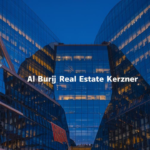Key Takeaways:
- Sustainable real estate investments yield long-term financial benefits.
- Environmental sustainability enhances property value.
- Investing in green buildings boosts community well-being.
What Is Sustainable Real Estate?
Sustainable real estate refers to properties developed and managed to reduce environmental impact, conserve resources, and promote health and well-being. These buildings often feature energy-efficient systems, sustainable materials, and design methods that minimize ecological footprints. Real estate professionals, including the Meza AZ real estate experts Shar Rundio Team, understand the increasing demand for green buildings and their long-term value. With the rising awareness of climate change and the necessity for eco-friendly living, sustainable real estate has gained paramount importance.
Financial Benefits of Sustainable Real Estate Investments
Investing in sustainable real estate has financial advantages. Green buildings often command higher rents and have lower vacancy rates. For example, a Global Real Estate Sustainability Benchmark (GRESB) study indicates that green-certified buildings can yield up to 11% higher returns than non-certified properties. Additionally, properties developed with sustainable practices often experience reduced operational costs due to lower energy and water usage. The savings on utilities, combined with potential tax credits and subsidies, usually balance out the initial higher costs of sustainable development. Moreover, such properties often attract higher-quality tenants willing to pay a premium for eco-friendly living.
Environmental Impact and Value Enhancement
Environmentally focused real estate often sees an uptick in property value. By using sustainable materials and energy-saving technologies, these properties significantly reduce carbon footprints, which is increasingly important to environmentally conscious buyers and investors. Implementing green standards can decrease energy use by 30-50%. Enhanced energy efficiency benefits the environment and translates to significant savings for property owners and tenants. Moreover, sustainable buildings have a longer lifespan and lower maintenance costs, enhancing their value over time. The reputation associated with green buildings also elevates their marketability.
Community Benefits of Green Buildings
Green buildings do more than just cut costs and reduce waste; they also enhance community well-being. Improved air quality and resource efficiency contribute to healthier living spaces, fostering happier and more productive communities. Data from The World Business Council for Sustainable Development shows that sustainable neighborhoods have lower crime rates and improve social cohesion. Moreover, green spaces integrated into sustainable real estate developments promote outdoor activities and community engagement. These areas can be shared spaces for residents to engage with one another, promoting community and inclusion. Schools, parks, and commercial areas within these communities also benefit from sustainable practices, ensuring a holistic approach to environmental care.
How To Start Investing in Sustainable Real Estate
Research green building certifications like LEED or BREEAM to start investing in sustainable real estate. These certifications ensure that the properties meet specific environmental and efficiency standards. Consider partnering with developers specializing in sustainable projects or looking for existing properties with green certifications. Diversifying your portfolio with sustainable assets can mitigate risk while promoting long-term returns. Additionally, investors should stay informed about government incentives and tax credits for sustainable building practices. Understanding local regulations and policies can also provide a competitive edge. Involved investors might attend conferences or join networks focused on sustainable practices to stay updated on the latest trends and innovations.
Challenges and Considerations
Despite the benefits, sustainable real estate investments come with challenges. Initial costs can be higher due to premium materials and technologies. Additionally, keeping up with evolving sustainability standards requires ongoing investment. Nevertheless, the long-term payoff often outweighs these initial hurdles. Investors need to do careful research to comprehend the cost-benefit ratio and consult with experts when needed. Also, the market for sustainable properties is still maturing, which means there can be variability in demand. Patient and educated investors who recognize the long-term benefits and stay committed to sustainable practices will likely see rewarding returns. Understanding these challenges can help planning, allowing investors to make more informed decisions and manage their resources efficiently.
Future Trends in Sustainable Real Estate
Looking ahead, the sustainable real estate market is likely to expand. Innovations in green technologies and materials will drive this growth, making sustainable properties more accessible. Moreover, increasing government incentives for green buildings will likely fuel further investments. Developments such as integrating smart technologies with sustainable practices offer exciting prospects for the industry. These innovations will not only improve energy efficiency but also enhance the quality of life for residents. Additionally, the rise of eco-friendly consumer habits will likely increase demand for sustainable living spaces. With the push towards net-zero carbon buildings and the growing support for renewable energy sources, the future of sustainable real estate looks promising and integral to a healthier planet.
Conclusion
Investing in sustainable real estate presents numerous benefits, from financial gains to community health improvements. By understanding the principles and challenges of sustainable investments, you can make informed decisions that contribute to a greener and more prosperous future. With the increasing popularity of sustainable living, those who invest in sustainable real estate early on stand to gain substantial benefits. Whether through higher property values, lower operational costs, or enhanced community well-being, sustainable real estate is not just a trend but a responsible path forward in real estate investment.










